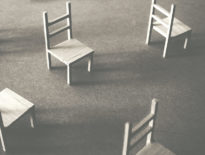The false analogy or the faulty analogy consists of the incorrect use of the analogy argumentative scheme without first meeting the requirements of a correct comparison.
Enhance your critical thinking. Read more of our articles on the topic.
“The power of an analogy lies in the fact that it is able to convince people to transfer the feeling of certainty they have regarding one subject to another one about which they might not yet have formed an opinion.”[1]
In a valid analogy, one can see how two objects, concepts or events have several properties in common which are relevant for the subject that inspired the analogy.
The false analogy[2], however, consists of the assumption that because things are similar in one aspect, they are automatically similar in others as well. Therefore, the false analogy appears when one affirms as valid a comparison made between things which are not similar enough to justify the respective comparison. Or as Descartes put it, “each time they see a resemblance between two things, people affirm about both of them, even about the aspects that are different, what they have only truly found in of one of them”.[3]
If a repairman can consult the user manual of a household appliance in his repair shop and an astronaut can consult the flight instruction manual during a mission, then a student should also be able to consult the course material when he needs to solve a problem during an examination. This analogy is invalidated because the similarities between the three situations described are less significant than the obvious differences. In other words, they are superficially similar and essentially different—the repairman and the astronaut are not faced with an exam, but engaged in an activity for which they must follow a written protocol. Conversely, it is precisely the protocol of academic examinations which, in most cases, forbids a student to consult his course materials.
Other daily examples of false analogies are: “If I couldn’t have a mobile phone when I was a student, you shouldn’t expect one either.” “If I prayed faithfully and got the answer I wished for, then you also will get the answer you wish for, provided that you pray faithfully.” In the case of these two examples, the contextual differences are bigger than the similarities, which invalidates the analogy and the potential conclusions which this might support. Another example, this time from the religious sphere, is: “If water can simultaneously exist in three aggregation states: liquid, solid and gas, then the Trinity who is one, has three coexisting manifestation forms.” This is a false analogy because the Christian doctrine of the Trinity describes a sacrament in which the three distinct divine Persons are one, not a sacrament in which one Person has three forms in which it manifests its presence.
Identify invalid comparisons
Most of the time, analogies are used for illustrative purposes, to make an idea easier to grasp or the mechanism of a complex process easier to decipher. In scientific research, analogies which are justified from a conceptual or experimental point of view play a role which cannot be easily neglected. These suggest hypotheses, assumptions of theorems and laws, which are then verified and validated. In the scientific world, not a few discoveries have been made by means of an analogy.
For example, the analogy between the trajectory of a circling stone on a string and the trajectory of the Moon was very useful for Isaac Newton to formulate the universals laws of movement and gravitation[4]. Louis de Broglie, using the analogy between the structure of light and that of substance, established that each particle corresponds to a wave (the so-called “associated wave”[5]).
In the scientific world, analogies become false when used to support conclusions bigger than allowed by the similarities on which a valid analogy could be built.
The vocabulary of many languages helps us in our attempt to denounce invalid analogies or comparisons through expressions like: “the town hall and the prefecture”, “the old lady and the machine gun” (in Romanian), “apples and oranges” (in English) or “the grandmother and the toad” (in Serbian).
In the cultural context of each country, these expressions help us recognise that not any identification of similar traits between objects or events necessarily leads to the identification or the prediction of other common traits.
People wish to find similarities on the basis of which they can make analogies, because analogical thinking makes certain complex or abstract concepts easier to understand. When dealing with something familiar, people feel more comfortable, and when they detect certain similarities between two concepts, objects or events, many rapidly start building analogies without even thinking they might be wrong.
Acquire your beliefs prudently
Politicians and marketing agents are the most guilty of using the false analogy to persuade the public. For instance, former American president Barack Obama used a false analogy in a speech regarding health insurance. He stated: “This is why, during my mandate, citizens will have the obligation to take out basic health insurance—like most states ask you to take out car insurance.”[6]
The fallacious analogy used by Obama was based on man’s natural instinct to associate traits and to find similarities between two concepts, while overlooking the multiple essential differences between the car insurance policy and the medical insurance one.
Christianity has not been spared from false analogies when it came to implementing certain practices and doctrines in the collective mind. An example hereof is the analogy which led to the worship of cult objects.
According to the biblical perspective, the cherubs placed on the Ark of the Covenant are material representations of angelic beings, built on God’s command. In the book of Joshua, chapter 7, it is written that “Joshua tore his clothes and fell face down to the ground before the ark of the Lord, remaining there till evening. The elders of Israel did the same, and sprinkled dust on their heads” (Joshua 7:6). The false analogy says that God approves of the worship of material representations of the saints (statues, icons), as He approved of Joshua’s worship of the cherubs on the Mercy Seat. But this ignores the fact that Joshua’s gesture did not represent worship of the cherubs, but of the God who said that He would manifest His presence there, above the Mercy Seat, between the two cherubs: “There, above the cover between the two cherubim that are over the ark of the covenant law, I will meet with you and give you all my commands for the Israelites” (Exodus 25:22).
Critical thinking, efficient defence and safe investment
Fallacious analogies can affect our capacity to establish the truth and act accordingly. If we are able to identify some of the most common incorrect rationalisations, the probability of us using them ourselves or us being deceived by others is smaller. A logical mind must be able to distinguish between fallacious analogies, irrespective of how persuasive they are, and convincing, reasonable and valid arguments. For this to happen, besides informing ourselves correctly, we need to be always willing to critically analyse the arguments we are offered, even when the process is arduous and costs time and energy. Constantly training our critical thinking will not only give us more certainty in the face of potential sources of manipulation, but will also strengthen our convictions and arguments.
Enhance your critical thinking. Read more of our articles on the topic.



















